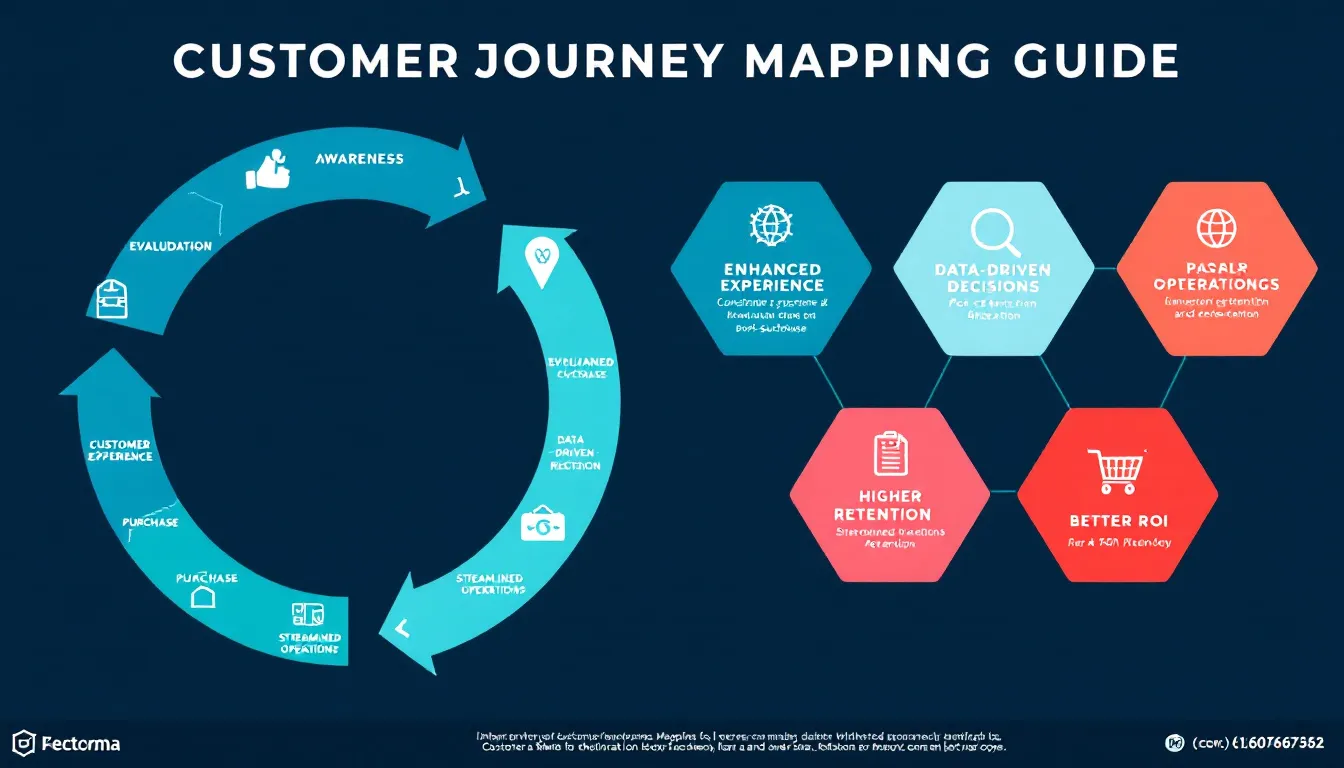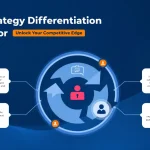Is this tool helpful?
How to Use the Customer Journey Mapping Tool Effectively
This customer journey mapping tool helps you analyze and optimize your customer touchpoints to improve your CRM strategy. Here’s how to fill each field with examples you can adapt:
Input Field Instructions
- Business Name: Enter your official company name. For example, “Blue Horizon Apparel” or “Urban Fresh Coffee”.
- Main Product/Service Offering: Describe your primary product or service. Examples include “Custom-tailored suits” or “Organic cold brew delivery service”.
- Unique Selling Proposition (USP): Summarize what sets your business apart. For example, “Eco-friendly materials with handcrafted quality” or “Fastest delivery times backed by satisfaction guarantee”.
- Target Customer Segments: Define your ideal customers by demographics or needs. Examples: “Millennial professionals seeking sustainable fashion” or “Health-conscious individuals aged 25-40”.
- Current Customer Interaction Channels: List where you engage customers. For instance, “Instagram, SMS campaigns, in-store events” or “Website chatbot, email newsletters, phone support”.
Understanding the Customer Journey Mapping Tool: Definition, Purpose, and Benefits
A customer journey mapping tool visualizes every step your customers take when interacting with your brand, from discovery to post-purchase follow-up. It helps you pinpoint critical moments where you can improve communication, resolve pain points, and boost overall satisfaction.
Purpose of the Tool
- Systematically track customer touchpoints across channels
- Identify weak spots causing friction or drop-offs
- Enhance customer experience with targeted improvements
- Align marketing, sales, and service efforts around customer needs
- Uncover new personalization and engagement opportunities
Key Benefits of Using This Customer Journey Mapper
- Improved customer satisfaction: Optimize touchpoints to exceed expectations.
- Increased retention rates: Address issues proactively to build loyalty.
- Data-driven insights: Base strategic decisions on actual customer behavior.
- Better cross-department collaboration: Share a unified customer perspective.
- Streamlined marketing and support: Allocate resources to channels with highest impact.
Practical Usage of the Customer Journey Mapping Tool
Use this tool to build a clear picture of your customers’ interactions and identify areas where your CRM strategy needs adjustment. Below are two examples of how different businesses apply it:
Example 1: Boutique Fitness Studio
- Initial Contact: Instagram fitness challenges and referral programs
- Engagement: Online class bookings and automated reminders
- Subscription: Membership plans with personalized coaching
- Follow-up: Feedback surveys and loyalty rewards
Example 2: SaaS Business
- Awareness: Blog posts and webinar sign-ups
- Consideration: Free trial sign-up and onboarding emails
- Conversion: Subscription purchase and usage tracking
- Retention: Customer support chat and product updates
Core Components of Customer Journey Analysis
- Touchpoint identification: Recognize every significant customer interaction.
- Channel effectiveness: Measure how communication channels perform together.
- Customer emotions: Map feelings to understand satisfaction and frustration points.
- Pain point resolution: Prioritize fixes where customers encounter issues.
- Opportunity optimization: Find new ways to personalize and enhance engagement.
Frequently Asked Questions About Customer Journey Mapping
How many touchpoints should I include in my customer journey map?
Focus on the key interactions that most influence customer decisions—usually between 5 and 8 touchpoints. Capturing these critical moments ensures you target the right areas for improvement.
How often should I update my customer journey map?
Update your map quarterly to maintain accuracy. Conduct major reviews annually or whenever you launch new products, services, or channels.
Can I use this tool for both B2B and B2C businesses?
Yes. Adapt the tool to your sales cycle length and customer decision processes. B2B journeys often involve multiple stakeholders and longer timelines, while B2C focuses on quicker purchases.
What metrics should I track alongside the customer journey?
Track metrics like Customer Satisfaction Score (CSAT), Net Promoter Score (NPS), Customer Effort Score (CES), conversion rates per stage, and average time between touchpoints for a complete view.
How do I ensure different departments engage in journey mapping?
Form cross-functional teams including marketing, sales, customer service, and product development to collect diverse insights and align on improvements.
Using Journey Mapping to Support Omnichannel Strategies
This tool helps you connect all your communication channels and deliver consistent experiences. By identifying integration points, it supports a seamless omnichannel approach across physical, digital, and social touchpoints.
Addressing Business Challenges with Customer Journey Mapping
Closing Customer Experience Gaps
Spot mismatches between customer expectations and their real experience. For instance, if customers expect 24/7 support but only get limited service hours, you can plan improvements to meet those needs.
Channel Integration and Data Flow
Evaluate how well your channels work together. For example, ensure social media conversations sync with your CRM so every customer interaction contributes to a unified profile.
Personalization Opportunities
Identify moments where tailoring messages or offers increases engagement. Use customer segment data to customize experiences based on behavior and preferences.
Important Disclaimer
The calculations, results, and content provided by our tools are not guaranteed to be accurate, complete, or reliable. Users are responsible for verifying and interpreting the results. Our content and tools may contain errors, biases, or inconsistencies. Do not enter personal data, sensitive information, or personally identifiable information in our web forms or tools. Such data entry violates our terms of service and may result in unauthorized disclosure to third parties. We reserve the right to save inputs and outputs from our tools for the purposes of error debugging, bias identification, and performance improvement. External companies providing AI models used in our tools may also save and process data in accordance with their own policies. By using our tools, you consent to this data collection and processing. We reserve the right to limit the usage of our tools based on current usability factors.







